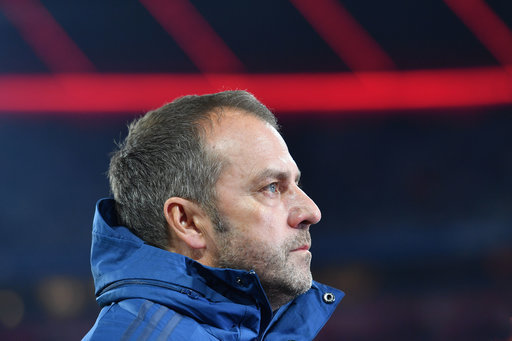Bayern Munich have undergone a conspicuous change since Hansi Flick took charge. The team are quite a bit more stable and has seized back a bit of the dominance lost under Niko Kovač. This is in large part down to Bayern's pressing, which is far less hesitant than under the previous manager, pressing on the first build-up line and consistently pushing up.
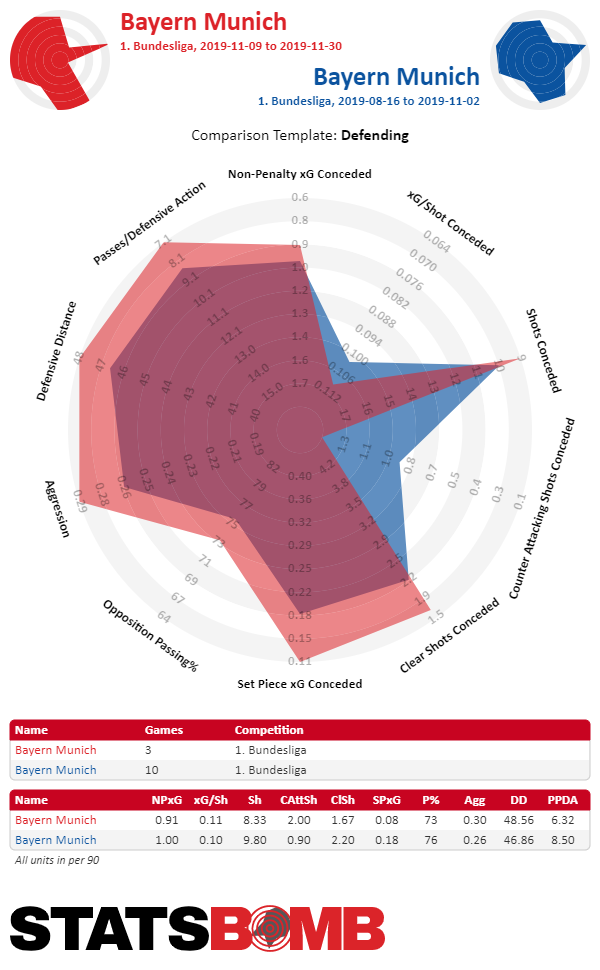
Comparing matches under Kovač and Flick, it is immediately apparent that the level of aggression increased. The match against Leverkusen, on the other hand, showed how a talented counter-attacking side can break through against this Bayern side with long balls and quick passing moves from within their own half.
Joshua Kimmich recently spoke of this aggression after a solid win over Borussia Dortmund. He mentioned how Bayern had "marked comprehensively across the pitch" and thus allowed pushing up high into the midfield. The consistent coverage also forced the likes of Mats Hummels and Co. into hastily made decisions. The defenders were ran at and could not find open receiving options ahead of them. Dortmund's midfielders particularly failed to ward off the attacks from Bayern players once they had received the ball. The pressing scheme, however, is fairly simplistic.
The opponent's build up is attacked early from the customary 4-3-3 formation. Usually an attacking midfielder moves toward the second centre-back, the one Robert Lewandowski is not already occupying. From the flanks, the wingers add to the pressure on the opponent's ball-carrier with short arching runs, thus making use of their cover shadows. In midfield, the rest of the Bayern team orientates itself toward the opponent's defensive midfielders, in theory leaving open an opposing central player, who, however, would be hard to reach with a lobbed pass given their distance to the ball, the short amount of time left for the ball-carrier and the partially blocked line of sight.
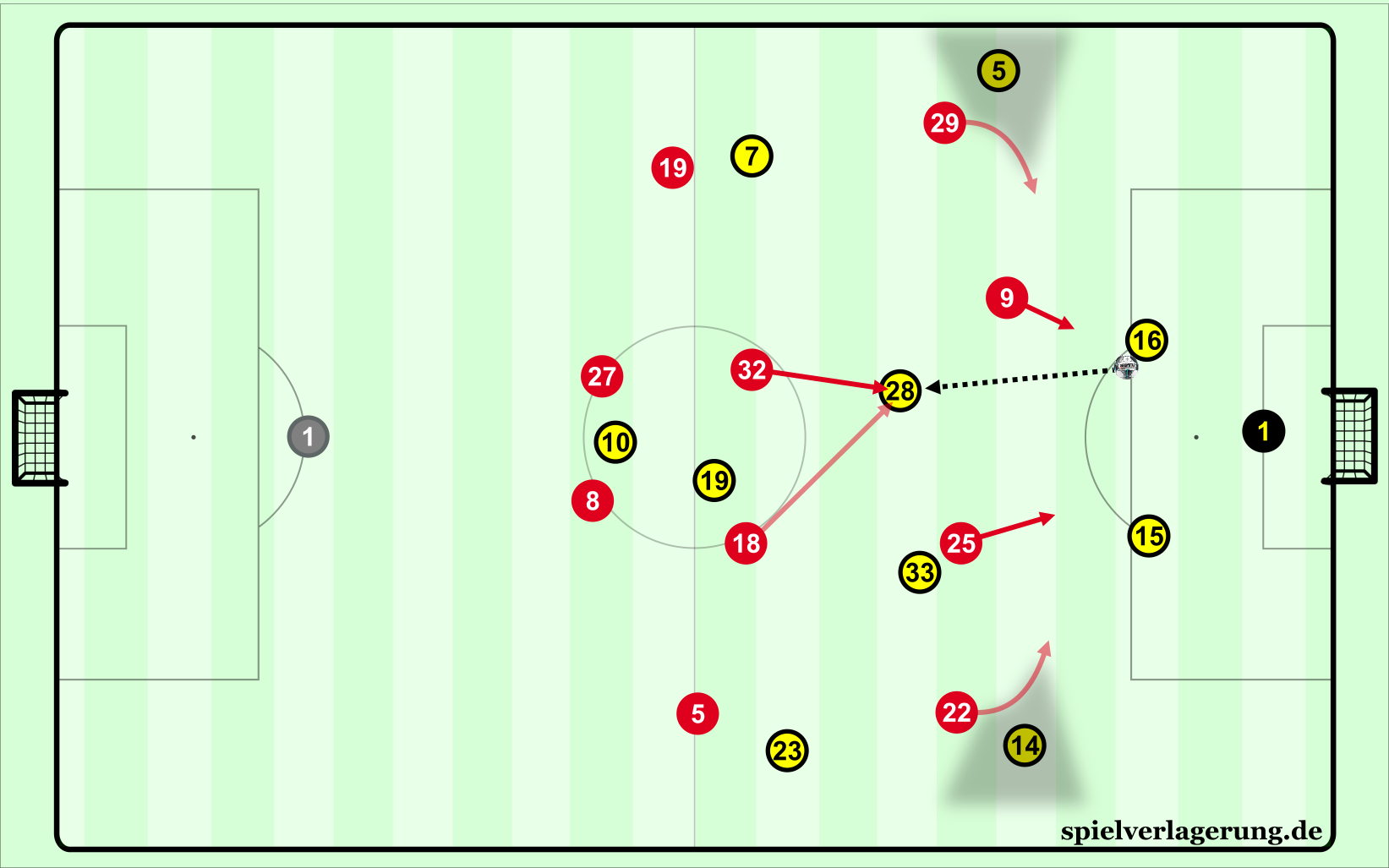
This is the structure from which Bayern usually pressed in the Dortmund match.
The pressing itself is anything but revolutionary. The individual quality in pressing was always present, as evidenced by a few early season matches. On the wings in particular, players such as Kimmich or Serge Gnabry were able to press and force defensive actions, not least because they had the added help of the touchline, creating more compactness around their opponent, which would not have been possible in the centre because of structural deficiencies.
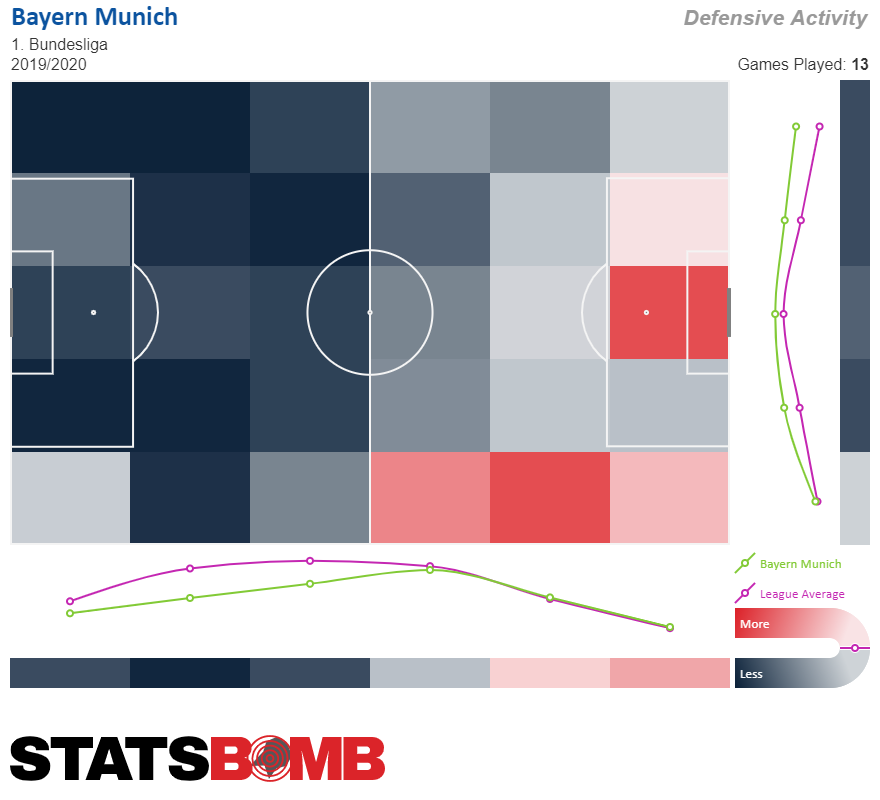
This map shows zones of above-average and below-average defensive actions in a league-wide comparison. Bayern shine on the right side, although this is not necessarily due to a structured plan, but rather the individual talent on the right. (There are exceptions – especially when Lewandowski ran at defenders from the half-left space and led the opposition's build-up to the right side.)
The Gegenpressing
Another component of the Bavarians' defensive style is of far more interest. In a lot of matches, they do not have the opportunity to consistently run at an opponent's open build-up play from an orderly pressing formation, as they were able to do against Dortmund. Instead, they are in possession themselves and have to react to possible losses of the ball. They have rethought the gegenpressing as well.
Previously, Bayern often attempted to win the ball back immediately, one to three seconds after losing it, and otherwise dissolved the gegenpressing and assumed a more compact defensive formation. Now the team remains in the gegenpressing moment and keeps up the pursuit in case the opponent plays a successful first pass and thus renders the first gegenpressing action a failed one. The implementation causes the two players closest to the ball move into gegenpressing immediately when the ball is lost in the left or right attacking half-space after a pass toward Lewandowski. Together with the Polish striker, they create a triangle around the new ball-carrier.
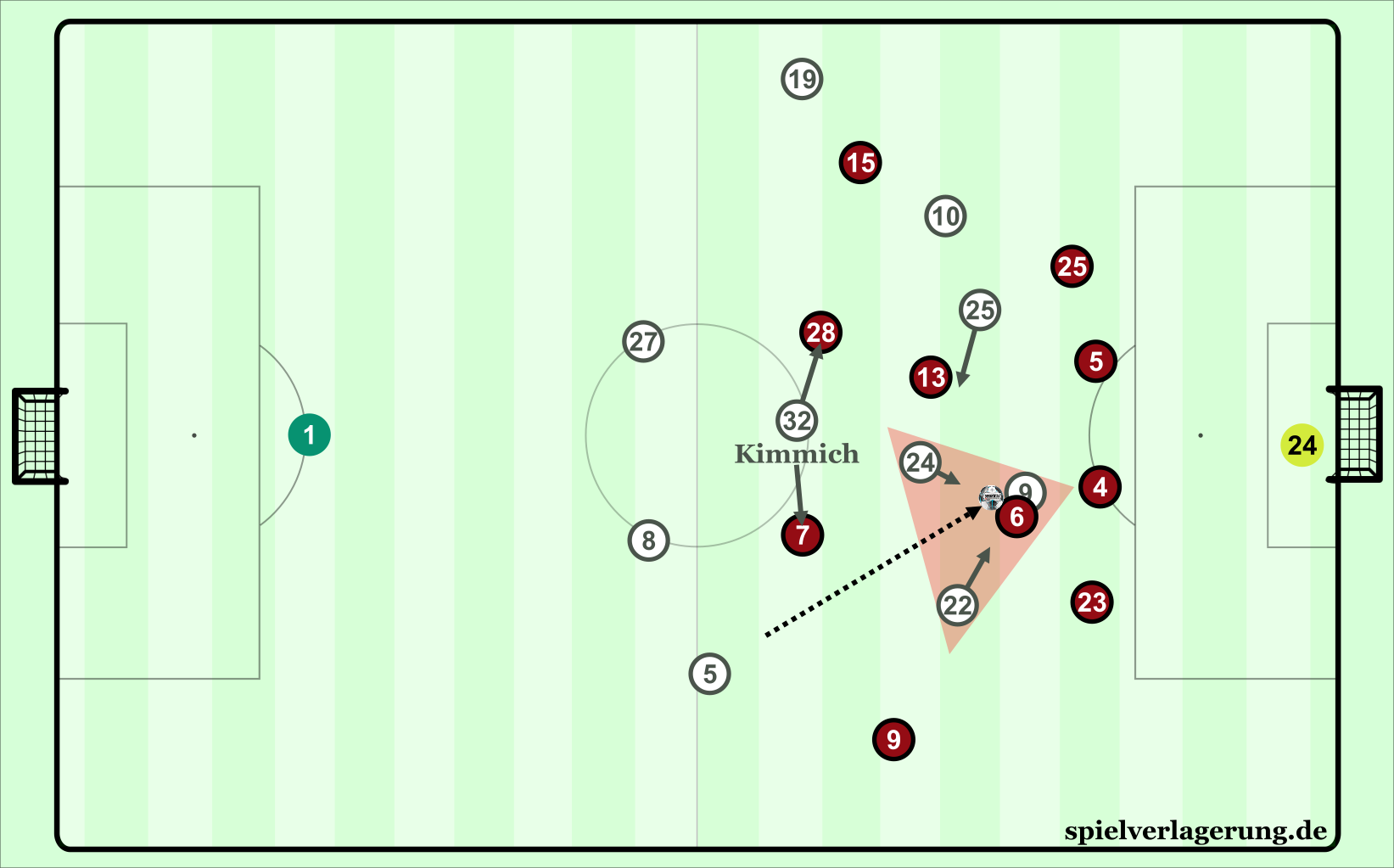
An exemplary view of the gegenpressing in the Düsseldorf match
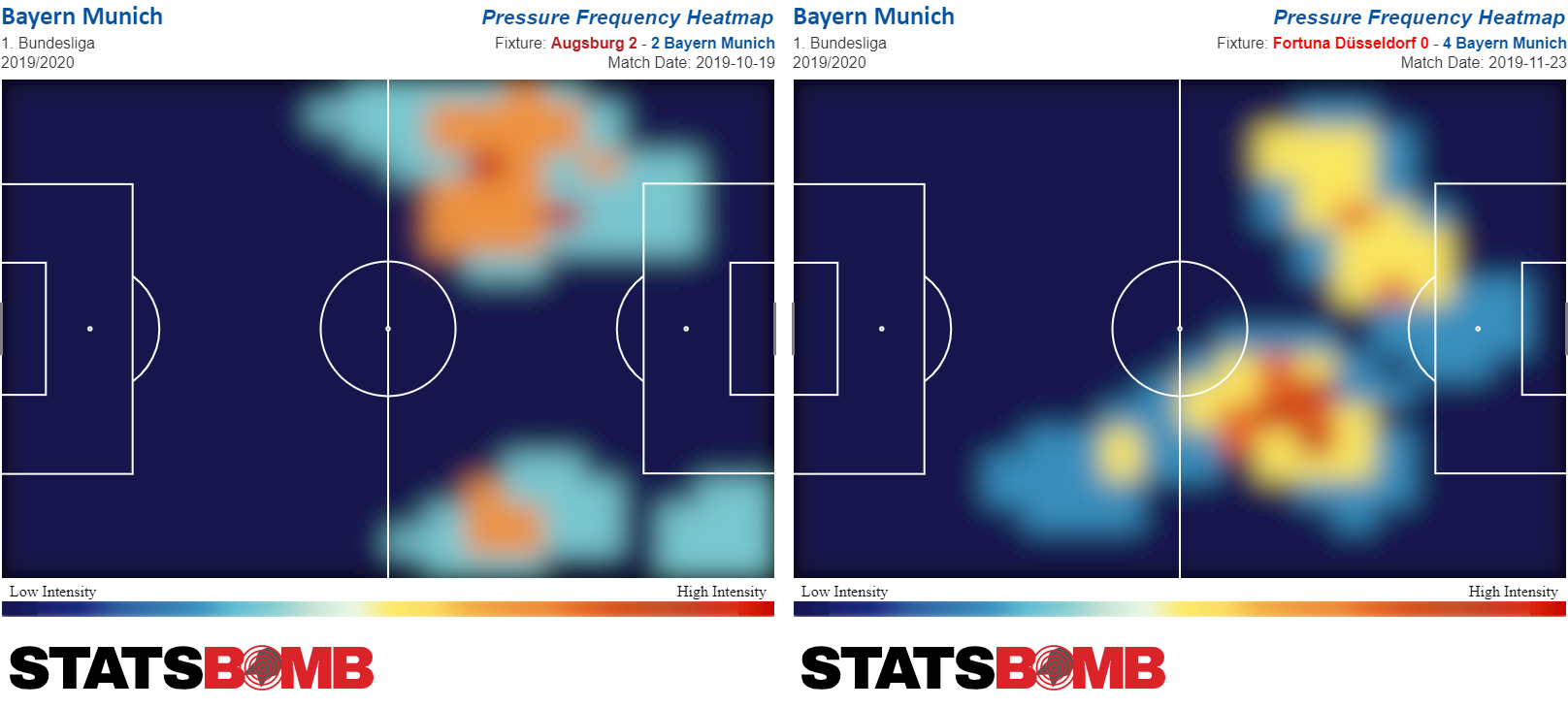
The comparison spells out the different focus and efficiency in the gegenpressing. In the first half against FC Augsburg, Bayern had a number of gegenpressing moments on the wings. In the second half against Fortuna Düsseldorf under Flick, on the other hand, the attacking half-spaces — where Lewandowski would typically receive the ball — turned out to be the spaces for gegenpressing.
This style of gegenpressing naturally only is an option because, under Flick, the two more attacking midfielders drift toward the wings less frequently, rather positioning themselves more centrally on the ball, allowing them quick access to the opposing ball-carrier in case a pass to Lewandowski or one of the wing attackers is not completed.
The structure in possession still remains the prerequisite for a functioning gegenpressing and thus a more general dominance. However, the forward-pushing movements of attacking midfielders would have to create a void in the central network of Bayern, should the attempt to win the ball back immediately, not come off — especially since Bayern have shown a tendency to keep trying the recover the ball immediately.
At times, players who are a considerable distance from the action decide to move toward the ball and join the gegenpressing attempt while compromising other spaces. Kimmich has proven, though, to have a knack for identifying the most likely next receiving option of the opponent and shortening his own travelling path toward the potential passing lane quite cleverly, so he can proactively prevent a counter-attacking move by winning the ball or applying pressure immediately after an opposing player has received the ball.
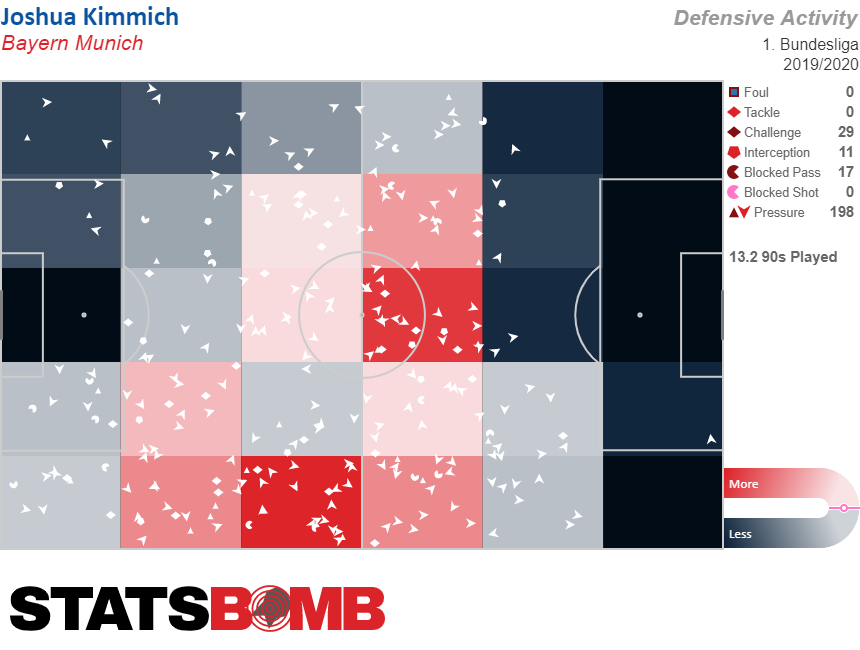
Kimmich's defensive actions over the course of the campaign again show he is quite active as a central midfielder especially in the zone before the half-way line. There, he either provides cover for the gegenpressing or functions as a coverage player in regular pressing.
Alternatively, Kimmich drops back into the back line and makes it stronger, in order to defend potential passes from the opponent out of the gegenpressing zone more effectively. Kimmich is, therefore, the safeguard for the still somewhat wild gegenpressing of his teammates in front of him.
Summary
Bayern have made drastic changes in their focus on working off the ball. It is no longer about minimising both damage and risk; rather, it's about proactive defending. This style of pressing and gegenpressing can only function when translatory movements are followed quickly and when an automatic conception of the following movements has developed for the moment after losing possession.
Naturally, questions remain whether Bayern can follow this plan against every opponent. Leverkusen have, to some extent, already showed how quick long balls to attacking players skilled in laying the ball off can be a means to an end, if the other attacking players push into the spaces created by the central defenders staying close to the striker accordingly.
Looking at the big picture of the coaching change at the German record champions, though, the true realisation is how quickly a major strategic sea change can function as long as the procedures remain simple and rest on something that is already well-known.
A version of this article can be found in German at https://spielverlagerung.de/2019/12/06/bayerns-pressing-unter-flick/
